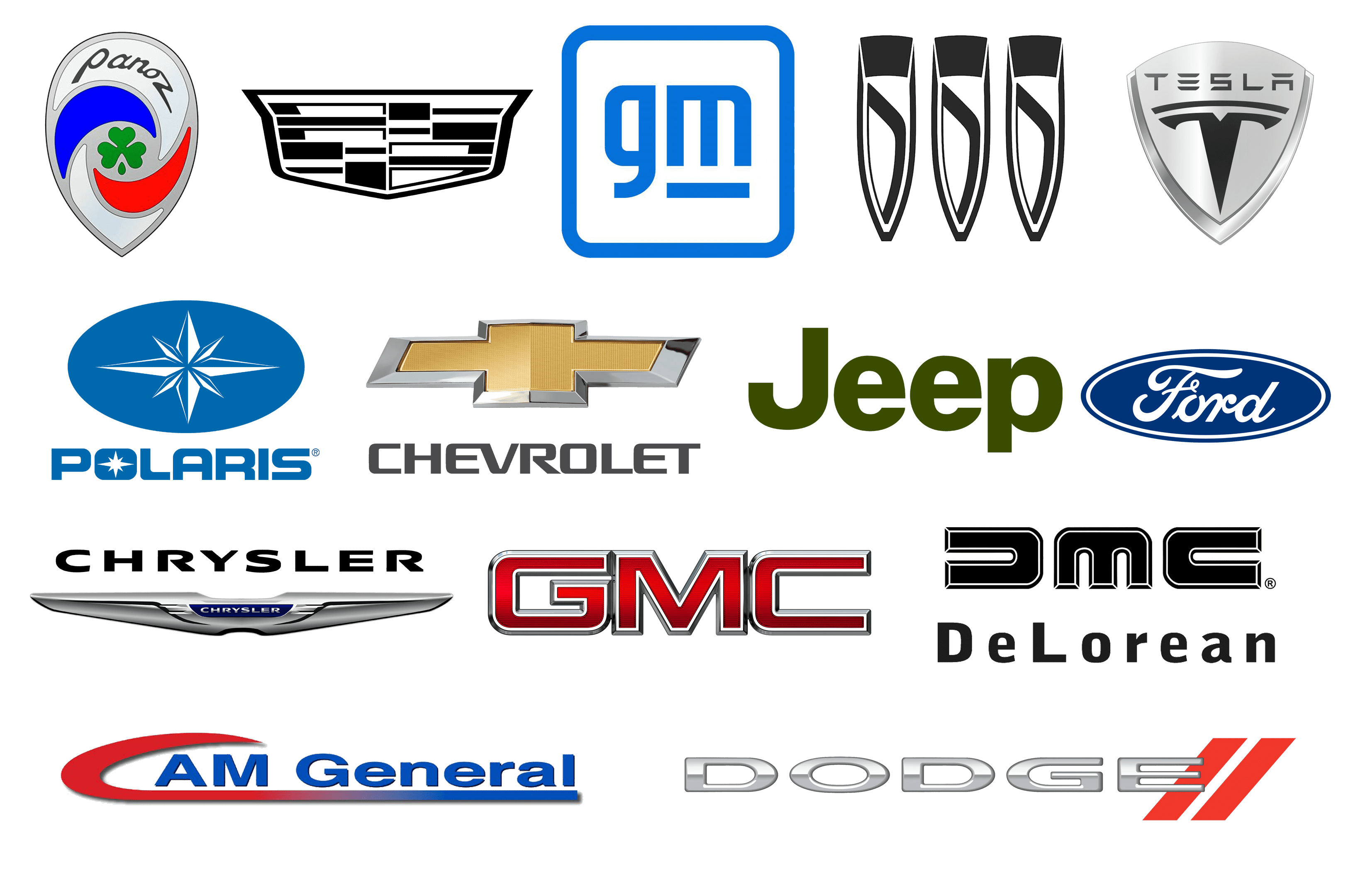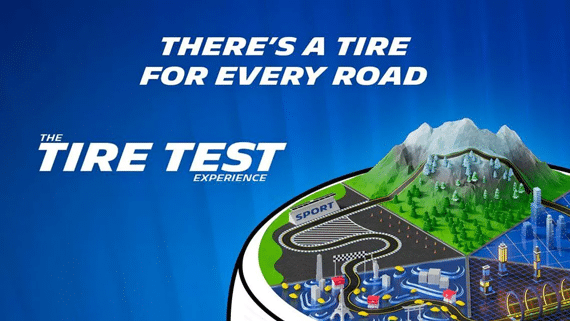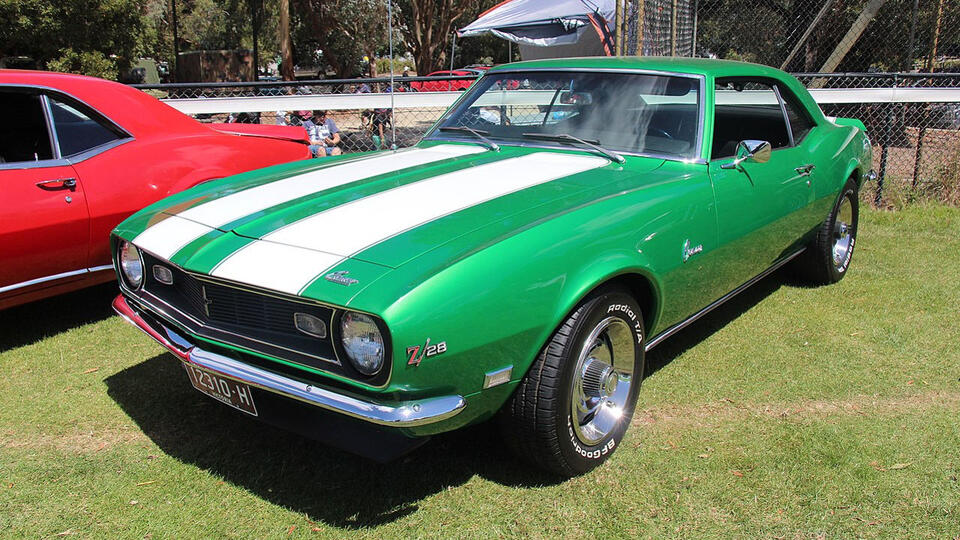American Made Car Brands: A Comprehensive Guide to Automotive Patriotism
American Made Car Brands: A Comprehensive Guide to Automotive Patriotism cars.truckstrend.com
The roar of an engine, the gleam of chrome, the smell of fresh leather – for many, these sensory experiences are intertwined with a sense of national pride, particularly when it comes to American-made cars. But what truly defines an "American Made Car Brand" in today’s interconnected global economy? It’s more complex than simply a badge on the hood. This comprehensive guide delves into the rich tapestry of American automotive manufacturing, exploring its iconic brands, the nuances of "made in America," and what it means for consumers today.
Understanding "American Made": More Than Just a Badge
American Made Car Brands: A Comprehensive Guide to Automotive Patriotism
At its heart, "American Made" evokes images of innovation, robust engineering, and job creation within the United States. However, the modern automotive industry is a global enterprise. Parts are sourced from around the world, and assembly plants dot the globe. So, when we talk about "American Made Car Brands," we’re primarily referring to brands with headquarters and significant research, development, and manufacturing operations based in the United States.
The American Automobile Labeling Act (AALA), enacted in 1992, provides a legal framework for understanding vehicle origin. It requires manufacturers to label new passenger vehicles with information about the percentage of US/Canadian parts content, the country of origin for the engine and transmission, and the final assembly point. While a high US/Canadian content percentage and US assembly point indicate a vehicle is largely "American made," even brands owned by foreign entities can build cars with high American content in US factories. For this article, we will focus on the brands themselves that are historically or currently headquartered in the US, while acknowledging the complexity of their supply chains and assembly locations. Choosing American-made vehicles often translates into supporting domestic jobs, strengthening local economies, and fostering a sense of national identity.
The Pillars of American Automotive: The Big Three
For over a century, three names have dominated the American automotive landscape, shaping its history and driving its future.
Ford Motor Company: The Pioneer’s Enduring Legacy
Founded by Henry Ford in 1903, Ford revolutionized manufacturing with the assembly line and made cars accessible to the masses. Today, Ford remains a global powerhouse, but its American roots run deep. The F-Series pickup truck, assembled in numerous US plants, has been the best-selling vehicle in America for decades, symbolizing American utility and ruggedness. Ford continues to innovate, investing heavily in electric vehicles (like the F-150 Lightning and Mustang Mach-E) and autonomous driving technology, all while maintaining significant manufacturing footprints in states like Michigan, Kentucky, and Missouri. Ford’s commitment to American manufacturing and its workforce is a cornerstone of its brand identity.
General Motors (GM): A Diverse Empire of Innovation
General Motors, established in 1908, grew to become one of the world’s largest automakers, encompassing a diverse portfolio of brands. Its core American brands include:

- Chevrolet: The most popular GM brand, offering everything from compact cars and sedans to popular trucks (Silverado) and SUVs (Tahoe, Equinox), as well as iconic sports cars like the Corvette. Chevrolet vehicles are widely assembled across the US.
- GMC: Focusing on trucks and SUVs with a more premium, professional-grade appeal than their Chevrolet counterparts. GMC vehicles share platforms with Chevrolet but offer distinct styling and features, often assembled alongside them in US plants.
- Cadillac: America’s luxury brand, synonymous with sophistication and advanced technology. Cadillac is undergoing a significant transformation, embracing electrification with models like the Lyriq, built in Tennessee, and aiming to lead in luxury EV innovation.
- Buick: Positioned as an attainable luxury brand, primarily focusing on SUVs. While some Buick models are sourced internationally, many of its key offerings for the US market are assembled domestically.

GM is aggressively pursuing an all-electric future, with massive investments in US battery plants and EV assembly facilities, signaling a renewed commitment to American manufacturing for the next generation of vehicles.
Stellantis (Jeep, Ram, Dodge, Chrysler): American Muscle and Utility with Global Reach
Stellantis was formed in 2021 from the merger of Fiat Chrysler Automobiles (FCA) and PSA Group. While Stellantis is a Dutch-based multinational corporation, its American brands—Jeep, Ram, Dodge, and Chrysler—have profoundly American identities and significant US manufacturing operations.
- Jeep: The quintessential American adventure brand, known globally for its off-road capability. The Wrangler, Grand Cherokee, and Gladiator are iconic models, with substantial assembly in Ohio, Illinois, and Michigan. Jeep embodies freedom and exploration, deeply rooted in American history.
- Ram: Spun off from Dodge, Ram focuses exclusively on trucks and commercial vehicles. Ram trucks are fierce competitors in the full-size pickup market, renowned for their power, capability, and luxurious interiors. Their primary assembly plants are in Michigan and Indiana.
- Dodge: Synonymous with American muscle cars and performance, Dodge offers high-horsepower sedans and SUVs like the Challenger, Charger, and Durango. While embracing a shift towards electrification, Dodge’s legacy of raw American power continues, with assembly plants largely in Michigan and Illinois.
- Chrysler: The brand that carries the original "Chrysler" nameplate has a more limited lineup today, primarily focusing on the Pacifica minivan. While the Pacifica is assembled in Windsor, Canada, the brand itself remains an integral part of the American automotive story, with its historical design and engineering roots firmly in the US.

These brands leverage American design, engineering, and manufacturing to produce vehicles that resonate with American values of ruggedness, power, and adventure.
Beyond the Giants: Emerging and Niche American Brands
The American automotive landscape is not just about the legacy automakers. A new wave of innovators is reshaping the industry, particularly in the electric vehicle (EV) space.
- Tesla: Founded in 2003, Tesla single-handedly pioneered the modern EV market and stands as a testament to American innovation. With gigafactories in California and Texas, Tesla designs and manufactures its cutting-Roadster, Model S, Model 3, Model X, Model Y, and Cybertruck in the US, challenging traditional automakers and accelerating the transition to sustainable energy.
- Lucid Motors: Based in California, Lucid is redefining luxury electric vehicles. Its flagship Air sedan, assembled in Arizona, boasts impressive range, performance, and exquisite design, positioning itself as a direct competitor to high-end luxury brands.
- Rivian: Headquartered in California with manufacturing in Illinois, Rivian focuses on electric adventure vehicles. Its R1T pickup truck and R1S SUV are designed for outdoor enthusiasts, offering robust performance and innovative features, establishing a strong presence in the burgeoning electric truck market.
These newer brands highlight America’s continued capacity for disruptive innovation and its leading role in the future of mobility.
Why Choose American Made? Benefits and Considerations
Opting for an American-made vehicle offers several compelling advantages:
- Economic Impact: Directly supports American jobs in manufacturing, engineering, design, and related industries (parts suppliers, dealerships). This has a ripple effect, boosting local economies.
- Quality and Durability: American manufacturers have continually improved their quality and reliability, often matching or exceeding international standards.
- National Pride: For many, owning an American-made vehicle is a statement of patriotism and a way to celebrate American ingenuity and craftsmanship.
- Design and Features: American brands often tailor their vehicles to American preferences, such as larger dimensions, powerful engines (historically), and features designed for long-distance travel or specific work needs.
- Service and Parts: With extensive dealer networks and supply chains within the US, parts and service for American-made vehicles are typically readily available.
However, considerations exist:
- Global Supply Chains: No car is 100% "American made" due to global sourcing of components. The definition is often about the percentage of US/Canadian content and final assembly.
- Foreign-Owned Brands with US Manufacturing: Many foreign brands (e.g., Toyota, Honda, BMW, Mercedes-Benz, Hyundai, Kia) operate significant manufacturing plants in the US, employing thousands of Americans and contributing to the US economy. While not "American Made Car Brands" in terms of ownership, their vehicles can have very high US content.
Navigating Your Purchase: Tips for Identifying American-Made Vehicles
If supporting American manufacturing is a priority, here’s how to make an informed decision:
- Check the AALA Label: Every new passenger vehicle sold in the US has a label (often on the window sticker) mandated by the American Automobile Labeling Act. It details the percentage of US/Canadian parts content, the country of origin for the engine and transmission, and the final assembly plant. Look for a high percentage of US/Canadian content and a US assembly location.
- Research Specific Models: Don’t assume all vehicles from an American brand are assembled in the US, or vice versa. Specific models within a brand’s lineup may have different origins. Websites like the American University’s Kogod School of Business "Made in America Auto Index" provide annual rankings based on various criteria, including profit margin, labor, R&D, and parts sourcing.
- Visit Dealerships and Ask Questions: Sales associates should be able to provide information on where a specific vehicle model is assembled and its parts content.
Challenges and the Future of American Car Manufacturing
The American automotive industry faces both challenges and exciting opportunities:
- Global Competition: Constant pressure from international automakers drives innovation and efficiency.
- Shift to Electric Vehicles (EVs): This represents a monumental shift requiring massive investments in new technologies, battery production, and charging infrastructure. American brands are at the forefront of this transition, building new EV plants and battery factories across the country.
- Supply Chain Resilience: Recent disruptions (like semiconductor shortages) have highlighted the need for more robust and localized supply chains.
- Automation and Workforce Evolution: Increased automation in manufacturing plants requires a highly skilled workforce, necessitating investments in training and education.
- Regulatory Landscape: Environmental regulations and trade policies continue to influence manufacturing decisions and vehicle development.
Despite these challenges, the future of American car manufacturing looks promising, driven by innovation in electrification, autonomous technology, and a renewed focus on domestic production.
Key American Car Brands Overview
Here’s a summary of the primary American-owned car brands, their focus, general price ranges, and key US manufacturing presences. Note that "General Price Range" is approximate MSRP for new models and can vary widely based on trim, options, and market conditions.
| Brand | Parent Company | Primary Focus/Vehicle Types | General Price Range (MSRP) | Key US Manufacturing States (Examples) |
|---|---|---|---|---|
| Ford | Ford Motor Company | Trucks, SUVs, Sedans, EVs, Commercial | ~$30,000 – $100,000+ | Michigan, Kentucky, Missouri, Ohio |
| Chevrolet | General Motors | Trucks, SUVs, Sedans, Sports Cars, EVs | ~$25,000 – $100,000+ | Michigan, Missouri, Indiana, Texas |
| GMC | General Motors | Trucks, SUVs (Premium) | ~$35,000 – $90,000+ | Michigan, Indiana, Missouri |
| Cadillac | General Motors | Luxury Sedans, SUVs, EVs | ~$45,000 – $100,000+ | Michigan, Tennessee |
| Buick | General Motors | Premium Sedans, SUVs | ~$25,000 – $60,000+ | Michigan, Tennessee (some models imported) |
| Ram | Stellantis | Trucks, Vans | ~$35,000 – $90,000+ | Michigan, Indiana |
| Jeep | Stellantis | SUVs, Off-Road Vehicles | ~$30,000 – $80,000+ | Ohio, Illinois, Michigan |
| Dodge | Stellantis | Muscle Cars, SUVs | ~$30,000 – $90,000+ | Michigan, Illinois |
| Chrysler | Stellantis | Minivans, Sedans (limited models) | ~$35,000 – $50,000+ | Historically US; Pacifica assembled in Canada |
| Tesla | Tesla Inc. | Electric Sedans, SUVs, Trucks | ~$40,000 – $130,000+ | California, Texas |
| Lucid Motors | Lucid Group | Luxury Electric Sedans | ~$70,000 – $180,000+ | Arizona |
| Rivian | Rivian Automotive, Inc. | Electric Trucks, SUVs | ~$75,000 – $95,000+ | Illinois |
Note: The "General Price Range" reflects approximate Manufacturer’s Suggested Retail Price (MSRP) for a typical range of models within the brand, from entry-level to higher trims, excluding ultra-luxury or extremely limited production models. Actual prices can vary based on features, region, and market conditions.
Frequently Asked Questions (FAQ) about American Made Car Brands
Q1: What exactly does "American Made" mean for a car?
A1: It generally refers to vehicles designed, engineered, and primarily assembled in the United States, often by US-headquartered companies. The American Automobile Labeling Act (AALA) defines "American-made" based on a certain percentage of US/Canadian parts content and the final assembly location.
Q2: Are all cars from Ford, GM, and Stellantis made in America?
A2: No. While these are American-headquartered companies with significant US manufacturing, they also have global operations. Many of their models are assembled in other countries, and even US-assembled vehicles contain parts sourced internationally. Always check the AALA label for specific model details.
Q3: What about foreign car brands that build cars in the US, like Toyota or Honda? Are they considered "American Made"?
A3: This is a common point of confusion. While brands like Toyota, Honda, BMW, and Mercedes-Benz are foreign-owned, they have substantial manufacturing plants in the US, employing thousands of American workers and producing vehicles with high US/Canadian parts content. While their brands are not American, the vehicles themselves can be considered "American-made" in terms of assembly and content. The focus of this article is on American-owned brands.
Q4: How can I find out how much "American content" a car has?
A4: Look for the AALA label on the vehicle’s window sticker. It will list the percentage of US/Canadian parts content, the country of origin for the engine and transmission, and the final assembly plant. You can also consult resources like the American University’s Kogod School of Business "Made in America Auto Index."
Q5: Is buying an American-made car always better for the US economy?
A5: Generally, yes. It supports American jobs in manufacturing, research, development, and the extensive supply chain. However, purchasing a foreign-branded car with high US content and assembly also contributes significantly to the US economy. The "most American" car often involves a nuanced look at ownership, assembly, and parts content.
Q6: What is the future of American car brands, especially with the rise of EVs?
A6: American car brands are leading the charge in the EV revolution. Ford, GM, and Tesla are investing billions in developing new electric vehicles, building battery factories, and expanding EV manufacturing capabilities within the US, signaling a strong future for American-made electric vehicles.
Conclusion
The concept of "American Made Car Brands" is deeply ingrained in the national consciousness, representing innovation, resilience, and economic strength. From the century-old legacies of Ford and General Motors to the disruptive forces of Tesla, Lucid, and Rivian, American ingenuity continues to shape the automotive world. While the complexities of global supply chains mean no vehicle is entirely domestically sourced, choosing a vehicle from an American-headquartered brand, especially one with high US assembly and parts content, is a powerful way to support domestic jobs, foster economic growth, and celebrate a proud automotive heritage. As the industry evolves, driven by electrification and new technologies, American car brands are poised to continue leading the way, ensuring that the spirit of American manufacturing drives into the future.





